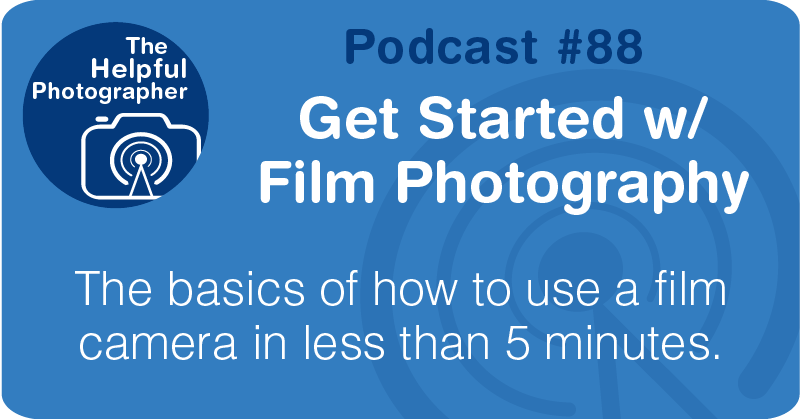Get Started w/ Film Photography #88
Get Started w/ Film Photography #88

iTunes
Google
Audible
Tune In
Stitcher
RSS
Pandora
Transcript
Get Started w/ Film Photography #88
Last week on a safari here in Manhattan, a participant arrived with none other than the Canon AE-1. The best selling SLR ever. Yes I said SLR not DSLR. It was a 35mm film camera. Although film is definitely not making a comeback, there are still many who want to give it a try, and although they make a big fuss about how great it is etc etc, all I can say is I still think film sucks. In my career I’ve shot a lot of film; everything from 120 to 8x10 and I’m simply over it. There is nothing that film can do that I can’t do better with digital; probably with the exception of infrared. So now you know how I feel about film let’s talk about how to actually use it.
First it should be noted that film is light sensitive. For the most part, once it is exposed to light it’s done, it’s over. For many this may seem obvious but for those who did not grow up with film, it’s not so obvious. I watched a young lady open the back of her film camera before rewinding her film into the canister, and she had no idea what the problem was. She didn’t know because her photography teacher didn’t tell her. When I was teaching film photography, I don’t remember having to tell my students that because it was just a known fact. But today students haven’t had the experience with film, so it really needs to be taught from the bottom up.
When you buy a 35 roll of film you will see a bit of film sticking out from the canister, this is called the leader. What you do is, put the canister into the camera, pull that leader to the other side and put it in the groove in the take up spool. Then you’ll want to wind the film a bit to make sure that the leader is properly loaded. If you close the back without making sure that it is securely in there, you may be shooting blanks, literally, because the film never caught and did not advance. Once it’s in, close the back door. Whatever you do, do not open the back until you have fully rewound the film.
Depending on the camera you may or may not have a little window on that back door. If you do, the window is there so you can see what film you have inside the camera. If you do not have a window, here’s a pro tip: tear off the flap on the box that tells you what kind of film you have and slip that into the square frame looking thing on the back of your camera. This will help tell you what you have loaded into your camera. From here you’re “almost” ready to shoot. Make sure that the ISO on your camera is set to the same ISO as your film. This is really important because the camera doesn’t know what kind of film you’ve put in there and it’s adjusting your setting based on this information. If there is a mismatch between the two, it means that all of your images will be either over or under exposed. Unfortunately film has a much smaller latitude than digital so it’s important to get this right. Before I forget if you have a camera capable of reading DX, which is a little bar code on the film canister then you won’t need to set the ISO. Now you are ready to shoot. Keep shooting until the film no longer advances. It means that you have come to the end of the role.
You’ll need to push the rewind button on the bottom of the camera in order to rewind the film back into the canister. This button will release the take up spool. DO NOT< DO NOT open your camera until all of the film is rolled back into the canister. How will you know when this has happened? When you hear a click it’s the first sign that the leader has come off of the take up spool. Another sign that the film has now fully rewound into the canister is when the rewind crank is spinning freely. You should know that if you turn the rewind crank and you don’t hear a click and it quickly spins freely it means that you never loaded the film properly and you were shooting blanks. You should also know that if you turn the rewind crank and it stops completely it means that you did not press the release button on the bottom of the camera.
That’s pretty much it. Each camera will have a different display mechanism inside the view finder to let you know if your settings will render an under, over or normal exposure. So I really can’t get into that. Just make sure that it reads zero or if there are any needles that they land in the middle of the display.











